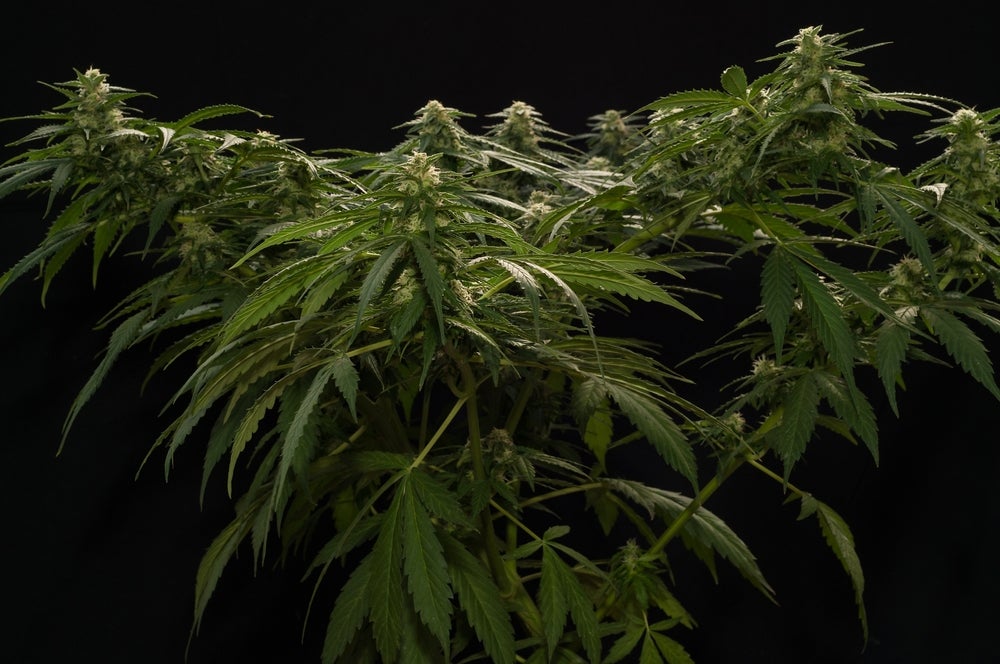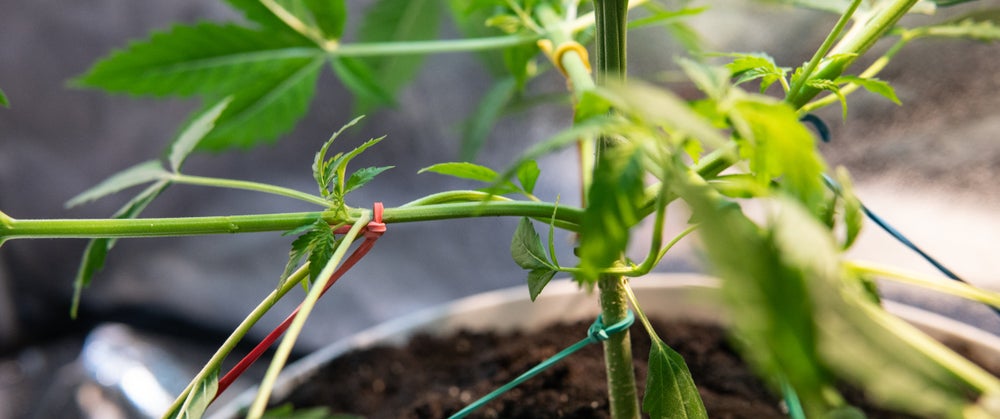- No Products In The Cart
- start shopping
What You Need to Know About High-Stress Training for Cannabis

High-stress training (HST) is a method of growing cannabis, also known as super cropping, where the plant is intentionally wounded in order to achieve several potential benefits. When stressed using this method, cannabis plants are believed to increase their levels of CBD and THC production and also increase their overall yields. This is because the cannabinoid compounds found in trichomes and terpenes are what protect the plant when grown in the wild.
It is believed that when a plant undergoes stress, or senses danger, it is prompted to produce or generate larger amounts of its defence strategy, which are what growers seek.
When applied appropriately, high-stress training can also result in a shorter, but a well-branched plant with many buds. Keep reading to learn everything you need to know about high-stress training for cannabis plants!

What Is High-Stress Training?
High-stress training (HST), also known as super cropping, is a method of growing cannabis where the plant is intentionally wounded in order to achieve several potential benefits. When stressed using this method, cannabis plants are believed to increase their levels of CBD and THC production and also increase their overall yields. This is because the cannabinoid compounds found in trichomes and terpenes are what protect the plant when grown in the wild.
It is believed that when a plant undergoes stress, or senses danger, it is prompted to produce or generate larger amounts of its defence strategy—in this case, cannabinoids like CBD and THC. By stressing the plant using HST methods, growers can encourage their plants to produce more cannabinoids than they would otherwise.
In addition to increasing cannabinoid production, high-stress training can also result in a shorter, but a well-branched plant with many buds. When done correctly, HST can be an incredibly effective way to grow high-quality cannabis. Let’s take a closer look at how HST works and how you can apply it to your own growth operation.

How Does HST Work?
The goal of high-stress training is to stress the plant without damaging or killing it. This can be accomplished through a variety of methods, including but not limited to topping, bending, and defoliation. Each of these techniques puts intentional stress on the plant which then prompts it to produce more cannabinoids as part of its defence mechanism.
Topping involves removing the main stem of the plant just above a node—this encourages the growth of multiple lateral branches which results in a shorter overall plant height with more buds. Bending involves physically bending the stems of the plant—this also encourages lateral branch growth while also making the plant shorter overall. Defoliation involves removing leaves from the plant—this shocks the system and encourages growth in other areas as the plant tries to recover from the loss of leaves.
All of these methods can be used individually or in combination with each other—it really depends on what you are trying to achieve with your grow operation. Experimenting with different techniques is part of what makes HST so fun and rewarding! Just remember that when you are applying any sort of stressor to your plants, you need to do so carefully and deliberately so as not to cause any irreversible damage.
Conclusion
High-stress training (HST) is an effective way to grow high-quality cannabis by deliberately stressing the plant in order to encourage increased cannabinoid production. While HST can be performed using a variety of methods—topping, bending, defoliation—it is important to exercise caution so as not to cause any irreversible damage to your plants. When done correctly, HST can result in shorter plants with more buds that are packed with higher levels of CBD and THC. So if you’re looking for ways to improve your cannabis crop, consider giving high-stress training a try!
Sources:
https://www.maximumyield.com/definition/4886/high-stress-training-hst
